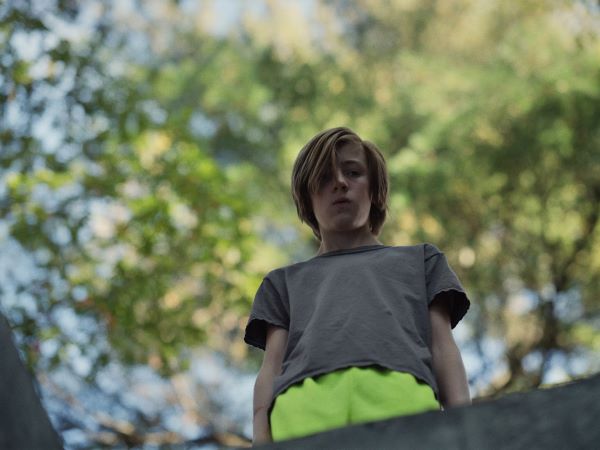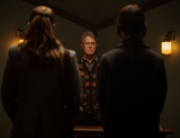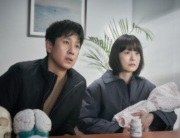
Childhood, though romanticized in classic works like Peter Pan, is also the territory of incredible fear, confusion, and darkness. Many of the best films about childhood, such as The Night of the Hunter, Forbidden Games, Spirit of the Beehive, and Pan’s Labyrinth, to name a few, brilliantly bring its more disturbing aspects, and the context surrounding them, to light.
John and the Hole, an uneasy new film which also grapples with the darkness of growing up, takes place in a world distinguished by its overwhelming numbness. Conversations seem stilted and surface level, characters are lost in their own worlds, and an eerie soundtrack emphasizes this feeling of disconnect, as well as the surreal cinematography, which often views people or parts of the natural world from unusual angles. Most of all, 13-year-old John stares out at the world with a blank face, appearing both uncomprehending and confused.
In the loose, somewhat cryptic frame tale, a girl named Lily invites us to view John’s story as a sort of dark bedtime story, and, indeed, the film works best if we are not too concerned with logistics. Essentially, the boy is confused, dissatisfied, scared—we are not immediately sure which or why. Upon discovering an abandoned bunker in the woods near his home, John traps his parents and his older sister in it, occasionally feeds them, and does his best to live by his own rules. The rest of his story line concerns his attempt to do so and his family’s struggle to stay sane and healthy and to pry from John a reason for his actions every time he comes to the mouth of the hole.
We do get a reason of sorts about midway through and observe in John’s actions an attempt to inhabit adult roles and deal with grown-up resources (cars and ATM cards) as though there was nothing unusual about his doing so. Also, through a series of drowning games in the swimming pool with Peter (his only friend we know of), we notice a fear and fascination with death. Nevertheless, John nor any one is ever brought fully to life. Consequently, he feels insubstantial, much more of a face and a look and a tone of voice than a person, and his struggles, which presumably lead him toward his extreme actions, fail to feel significant.
Also, for a movie with such an odd premise, it is remarkable how little of it is surprising. While I can’t say I came into this one with a list of predictions, John behaves more or less as you’d expect him to (he plays video games, invites his friend over, makes some unconvincing lies, stares vacantly into space) once his family is in the hole. His family’s progression down below is equally paint by numbers.
In short, the cunning cinematography cannot conceal the unimaginative dialogue, which so frequently grasps for an oddness and profundity it fails to produce. As a result, John and the Hole is a fine example of arthouse emptiness.






Leave A Comment